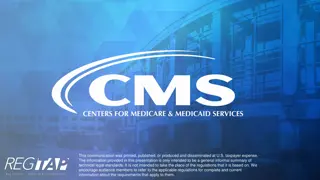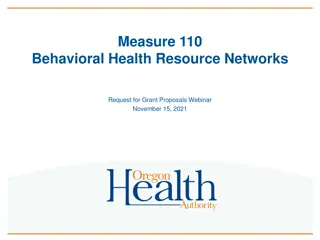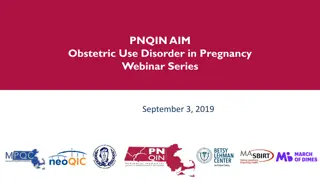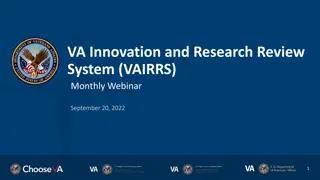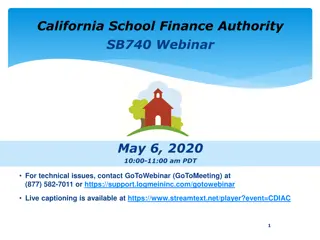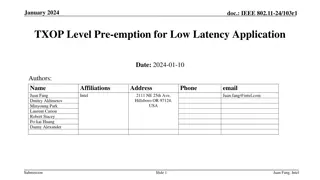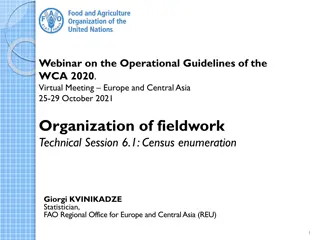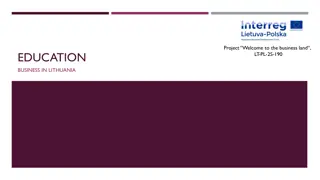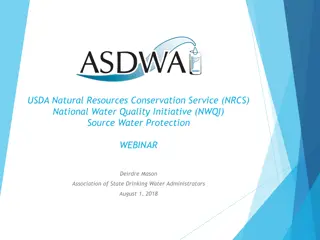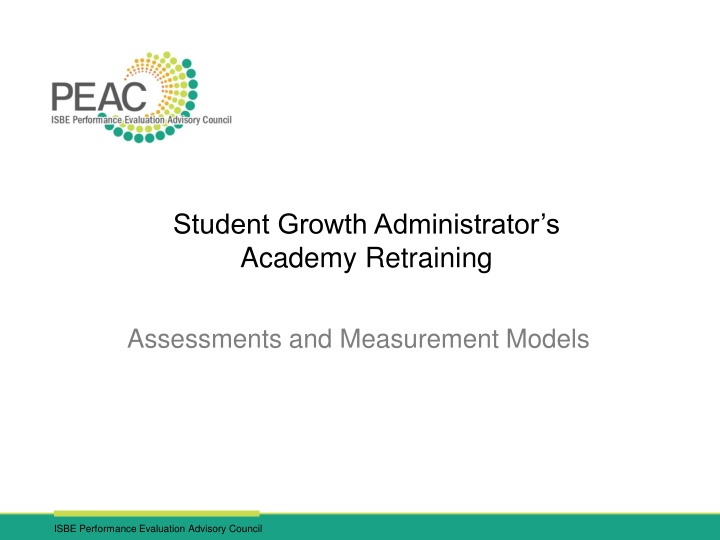
Student Growth Assessments and Measurement Models in Illinois
Learn about student growth assessments, measurement models, and the role they play in evaluating teachers' performance in Illinois. Discover how assessments align with the Illinois Learning Standards and the importance of student growth representation in performance evaluations.
Download Presentation

Please find below an Image/Link to download the presentation.
The content on the website is provided AS IS for your information and personal use only. It may not be sold, licensed, or shared on other websites without obtaining consent from the author. If you encounter any issues during the download, it is possible that the publisher has removed the file from their server.
You are allowed to download the files provided on this website for personal or commercial use, subject to the condition that they are used lawfully. All files are the property of their respective owners.
The content on the website is provided AS IS for your information and personal use only. It may not be sold, licensed, or shared on other websites without obtaining consent from the author.
E N D
Presentation Transcript
Student Growth Administrators Academy Retraining Assessments and Measurement Models ISBE Performance Evaluation Advisory Council
Assessment Assessment means any instrument that measures a student s acquisition of specific knowledge and skills. Assessments used in the evaluation of teachers, principals and assistant principals shall be aligned to one or more instructional areas articulated in the Illinois Learning Standards. (Illinois Administrative Code Part 50, Sub. A, Sec. 50.30) ISBE Performance Evaluation Advisory Council
Student Growth Student growth means a demonstrable change in a student s or group of students knowledge or skills, as evidenced by gain and/or attainment on two or more assessments, between two or more points in time. (Illinois Administrative Code Part 50, Sub. A, Sec. 50.30) ISBE Performance Evaluation Advisory Council
Student Growth Components Student growth shall represent at least 25% of a teacher s performance evaluation rating in the first two years of implementation. Thereafter, student growth shall represent at least 30% of the rating assigned. (Illinois Administrative Code Part 50, Sub. B, Sec. 50.110) ISBE Performance Evaluation Advisory Council
Student Growth Components The performance evaluation plan shall identify at least two types of assessments for evaluating each category of teacher and One or more measurement models to be used to determine student growth that are specific to each assessment chosen. (Illinois Administrative Code Part 50, Sub. B, Sec. 50.110) ISBE Performance Evaluation Advisory Council
Measurement Model Measurement model means the manner in which two or more assessment scores are analyzed for the purpose of identifying a change in a student s knowledge or skills over time. (Illinois Administrative Code Part 50, Sub. A, Sec. 50.30) ISBE Performance Evaluation Advisory Council
Type I Type I assessment means a reliable assessment that measures a certain group or subset of students in the same manner with the same potential assessment items, is scored by a non-district entity, and is administered either statewide or beyond Illinois. (Illinois Administrative Code Part 50, Sub. A, Sec. 50.30) ISBE Performance Evaluation Advisory Council
Type II Type II assessment means any assessment developed or adopted and approved for use by the school district and used on a district wide basis by all teachers in a given grade or subject area. (Illinois Administrative Code Part 50, Sub. A, Sec. 50.30) ISBE Performance Evaluation Advisory Council
Type III Type III assessment means any assessment that is rigorous, that is aligned to the course s curriculum, and that the qualified evaluator and teacher determine measures student learning in that course. (Illinois Administrative Code Part 50, Sub. A, Sec. 50.30) ISBE Performance Evaluation Advisory Council
Assessment Types A Type I or Type II assessment may qualify as a Type III assessment if it aligns to the curriculum being taught and measures student learning in that subject area. Type I Type II Type III (Illinois Administrative Code Part 50, Sub. A, Sec. 50.30) ISBE Performance Evaluation Advisory Council
Student Growth Components The evaluation plan shall include the use of at least one Type I or Type II assessment and at least one Type III assessment. If neither a Type I nor a Type II assessment can be identified, then the evaluation plan shall require that at least two Type III assessments be used. (Illinois Administrative Code Part 50, Sub. B, Sec. 50.110) ISBE Performance Evaluation Advisory Council
Student Growth Components Assessments used for each data point in a measurement model may be different provided that they address the same instructional content. (Illinois Administrative Code Part 50, Sub. B, Sec. 50.110) ISBE Performance Evaluation Advisory Council
Student Growth Components Option 1: Type I and Type III Option 2: Type II and Type III Option 3: Two Type III s ISBE Performance Evaluation Advisory Council
Midpoint Check-In Each plan shall identify the uniform process (to occur at the midpoint of the evaluation cycle) by which the teacher will collect data specific to student learning. (Illinois Administrative Code Part 50, Sub. B, Sec. 50.110) ISBE Performance Evaluation Advisory Council
The SLO Process A Student Learning Objective (SLO) is a detailed process used to organize evidence of student growth over a specified period of time. ISBE Performance Evaluation Advisory Council
SLO Template The SLO template includes questions and statements that guide educators through the process of measuring student growth for the purpose of performance evaluation. ISBE Performance Evaluation Advisory Council
Student Growth Elements Element 1: Learning Goal Element 2: Assessments Element 3: Growth Targets Element 4: Outcomes Element 5: Teacher Rating ISBE Performance Evaluation Advisory Council
Learning Goal A learning goal is a description of what students will be able to do at the end of a specified period of time aligned to appropriate learning standards. The development of a learning goal provides a foundation for meaningful, goal directed instruction and assessment. ISBE Performance Evaluation Advisory Council
Learning Goal Example Students will draw evidence from literary or informational texts to support analysis, reflection, and research. ISBE Performance Evaluation Advisory Council
Assessments Assessment, evaluation, and scoring procedures should be used to support and measure the learning goal. The guiding questions and statements included within this element help teachers and evaluators determine how assessments will be used to monitor student growth in order to inform and differentiate instruction for all students. ISBE Performance Evaluation Advisory Council
Assessment Example Weekly Essays (Type II or III) Students practice writing formal essays on a weekly topic that includes opportunities for self- or peer- assessment and revision. All essays are evaluated using a common rubric that allows for substantive feedback. Students may also use this rubric to evaluate their own work when engaging in self- or peer-assessment. ISBE Performance Evaluation Advisory Council
Growth Expectations The guiding questions and statements included within this element help teachers and evaluators identify appropriate growth targets. Growth targets should be differentiated for individual students or groups of students. Growth targets should be ambitious, yet realistic for students to achieve in the specified period of time. ISBE Performance Evaluation Advisory Council
Outcomes The outcomes identify how students performed at the end of the instructional period. The guiding questions and statements included within this element prompt teachers to record the actual number or percentage of students who achieved the identified growth expectations. ISBE Performance Evaluation Advisory Council
Teacher Rating The method for determining a teacher rating for each SLO must be determined by the PERA joint committee. A teacher rating process is outlined in the State Performance Evaluation Model. ISBE Performance Evaluation Advisory Council
Measurement Model Step 1: Collect Baseline Data Teachers collect baseline data at the beginning of the school year or interval of instruction. Baseline data provides measures of student understanding and ability to apply content knowledge. ISBE Performance Evaluation Advisory Council
Measurement Model Many teachers already collect baseline data at the start of the school year in order to appropriately differentiate instruction. Baseline data may include: ISBE Performance Evaluation Advisory Council
Baseline Data Example Student Beginning Emerging Developing Capable Experienced Exceptional Adrian Anne Brian Carlos Dionne Esther Juliet Karen Lewis Michael Manuel Melissa Nathan Richard Tony X X X X X X X X X X X X X X X ISBE Performance Evaluation Advisory Council
Measurement Model Step 2: Determine Growth Expectations Student growth expectations are then differentiated according to starting group or individual student. ISBE Performance Evaluation Advisory Council
Growth Expectations Example Student Beginning Emerging Developing Capable Experienced Exceptional Adrian Anne Brian Carlos Dionne Esther Juliet Karen Lewis Michael Manuel Melissa Nathan Richard Tony X X X X X X X X X X X X X X X ISBE Performance Evaluation Advisory Council
Measurement Model At the midpoint in the SLO cycle, the collected data should be examined to determine if students are on track to meet their growth expectations. Do growth expectations need to be adjusted due to over or underestimation, and/or justifiable circumstances for individual students or certain groups of students? ISBE Performance Evaluation Advisory Council
Measurement Model Step 3: Document Outcomes Finally, the teacher documents how many students met their growth expectations. ISBE Performance Evaluation Advisory Council
Outcomes Example Growth Targets Student Essay 1 Essay 2 Essay 3 Essay 4 Outcome Juliet Emerging Developing Developing Capable Capable Manuel Emerging Emerging Developing Emerging Developing - Melissa Developing Developing Capable Capable Capable Richard Beginning Beginning Emerging Developing Developing Tony Developing Developing Capable Experienced Experienced ISBE Performance Evaluation Advisory Council
Teacher Rating Example Unsatisfactory Needs Improvement Proficient Excellent Less than 25% of Students Met the Indicated Growth Target(s). 25% - 50% of Students Met the Indicated Growth Target(s). 51% - 75% of Students Met the Indicated Growth Target(s). 76% - 100% of Students Met the Indicated Growth Target(s). ISBE Performance Evaluation Advisory Council
Resources Illinois Administrative Code Part 50 http://www.isbe.state.il.us/rules/archive/pdfs/50ARK.pdf ISBE Balanced Assessment http://www.isbe.net/assessment/htmls/balanced-asmt.htm ISBE Performance Evaluation Advisory Council

